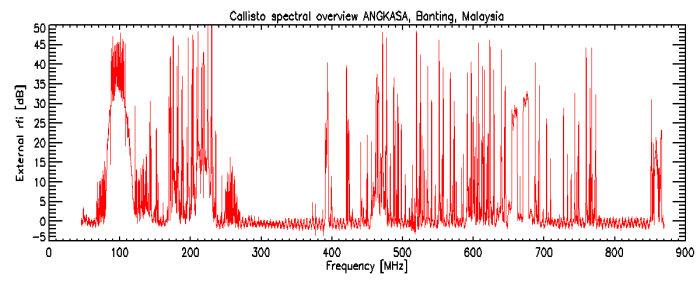Signal Detection Performed by Log Periodic Dipole Antenna (LPDA) in Solar Monitoring
CALLISTO
DOI:
https://doi.org/10.14331/ijfps.2012.330029Keywords:
Log Periodic Dipole Antenna (LPDA), signal detection, CALLISTOAbstract
This article describes signal detection by Log-Periodic Dipole-Antenna (LPDA) which designed for solar monitoring with very high-performance in 45 MHz till 870 MHz. The LPDA, consisting of 19-elements, achieves a gain higher than 10 dBi with low noise amplifier. It has successfully setup at National Space Centre, Banting on 15th February 2012. Our objective in this work is to detect any signal at National Space Centre, Sg. Lang, Selangor which connected with CALLISTO spectrometer. Detailed analysis also revealed the interference sources that caused interruption of solar signal. Specific range of frequency that considered a minimum Radio Frequency Interference (RFI) also has been done. We found that high level interference is received from FM-band (80 MHz – 108 MHz), from VHF-band and from UHF-band. In the UHF-band, we could recognize (beside a lot of analog-TV) two (2) DVB-T channels between 650 MHz and 700 MHz. The ‘comb’ of signals proves that the whole system is working correctly with good sensitivity. This feature can be used to check the system as part of periodic maintenance. Beside the established detection techniques, some improvization of LPDA is also highlighted. The noise floor at all frequencies below 3 dB is in fact not noise, but represents standing waves due to the fact that the LPD antenna is not matched to the 50Ω coaxial cable due to the small size of boom’s diameter. Total sensitivity can be improved by impedance matching of antenna and coaxial cable.
Downloads

Downloads
Published
How to Cite
Issue
Section
License
Copyright (c) 2020 International Journal of Fundamental Physical Science

This work is licensed under a Creative Commons Attribution 4.0 International License.










